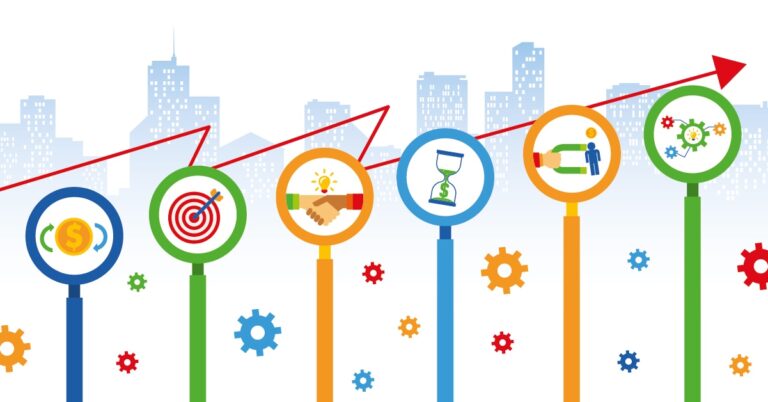As difficult as it may seem, boosting sales for your website is not just dependent on what Google has to say. Key Performance Indicators (KPIs) are a collection of data that you can use to assess your B2B company’s success and determine how to improve it.
A high-performing sales team has a sound plan, committed team members, and a thorough understanding of their clients’ needs, but data is where the money is. There is no way to design the ideal approach for your future if you don’t look back at your history.
Performance indicators that your team can use to plan forward for the year are included in B2B sales KPIs. B2B KPIs, in particular, allow sales leaders to take a step back and assess how the organisation is performing in relation to the sales team’s objectives.
So, if your annual revenue isn’t meeting your expectations, you’ll need to figure out what’s going wrong and how to repair it. Tracking the correct sales KPIs at the right time can provide you with useful information to assist you in doing so.
On that note, here are some of the most beneficial, and vital, sales KPIs you should be tracking!
- “In high-productivity sales organizations, salespeople do not cause customer acquisition growth, they fulfill it.” – Aaron Ross
1. Opportunities by lead source:
A sales lead is someone who has already expressed interest in an issue that your product or service might potentially solve. This turns the lead into an opportunity, and your main goal now is to turn it into a qualified sale.
Knowing which path most of your opportunities take could help you figure out what you should focus on as a firm. If most of your possibilities come from webinar conversions, for example, it’s a good idea to double down and devote more time to webinars.
You’ll have a far better understanding of what to focus on once you know which lead source is delivering you the majority of the opportunities coming your way. This is one of the B2B sales KPIs that can help you save time and money in the long term.
2. Sales by different regions:
Keeping track of where your sales come from is a smart approach to figure out where you should concentrate your marketing efforts. This KPI will show you the total number of sales for your services/products all over the world.
If you maintain track of this KPI, you’ll be able to see if you’re on track to fulfil your sales targets in each region. A goal of 1500 sales from Canada, for example, may be tracked using the KPI.
3. Monthly sales growth:
This is one of the SaaS B2B indicators that shows how much sales volume is increasing on a monthly basis. Are the modifications you’ve made effective, and are there any sales trends you should pay more attention to? Looking at your monthly sales increase and reflecting on the sales decisions that got you there can frequently help you answer these questions.
4. Conversion Rate of Marketing Qualified Leads (MQL) to Sales Qualified Leads (SQL):
A Marketing Qualified Lead (MQL) is a B2B marketing KPI that should be used in tandem with your sales KPIs. You can also assess how effective your funnel is by comparing your MQL to your Sales Qualified Leads (SQL).
This is how it’s done:
An MQL is a lead who has recently entered your sales funnel by completing an opt-in freebie, subscribing to the company podcast, or registering for one of the firm’s webinars.
A Sales Qualified Lead (SQL) is a prospect that is ready to speak with a member of your sales team because they may be interested in one of your goods.
The Marketing Qualified Leads that convert to Sales Qualified Leads will show you how effective your marketing is.
So, if 1000 individuals sign up for a complimentary opt-in on your website and 150 of those 1000 people convert into Sales Qualified Leads (people who wish to contact your sales team to learn more about your product), your MQL to SQL conversion rate is 15%.
This is one of the B2B marketing metrics that is important for both the marketing and sales teams so that they can create a stronger relationship and more easily align their aims. When everyone works together to fill in any gaps in your strategy, the organization will be able to take advantage of every marketing lead that comes in.
In order to align your buying and selling process, working alongside buyers throughout the buying process can help you develop trust and build stronger, longer-lasting relationships with your clients. You can only become a successful salesperson when you become an expert in your customers’ businesses, function as problem-solver and think more about your customers’ needs and challenges throughout the buying process. This would create a sales organization truly focused on the customer and retain better growth results.


